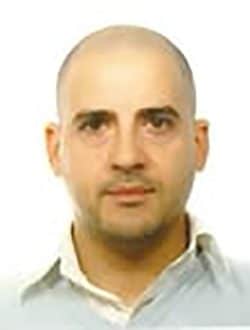Biography
Davide Mencarelli received (2002) the Laurea in Electronic and Telecommunication Engineering from University Politecnica of Marche (UNIVPM), Ancona, Italy. He obtained the PhD degree (2005) from UNIVPM, in Electronic and Telecommunication Engineering. He was graduated (2006) for enabling Professional Engineer. Since 2014, he is Assistant Professor at the Department of Information Engineering of UNIVPM. His research activity spans over a wide area, including: coherent charge transport in low dimensional systems, photonic crystals, nano–field effect transistors (nano-FET), planar slot array antennas and microwave components, Scanning Probe Microscopy (SPM), Optomechanics and Phononic devices. Awards, memberships and positions: i) IEEE MTT‐S Speaker Bureau, ii) voting member of the Nanotechnology Council (NTC) AdCom, iii) Member of the Italian Institute of Nuclear Physics (INFN), iv) Member of the MTT TC 25 Technical Committee, “RF Nanotechnology”, approved by the MTT-S in 2010, http://mtt25.dibet.univpm.it/, v) Associate Editor of “Nanomaterials and Nanotechnology”, Intech open acces publisher, ISSN 1847-9804, DOI 10.5772/5, and of “Journal of Computational Electronics” https://link.springer.com/journal/10825.
Presentations
Advanced Modeling and Design of RF Devices and Systems based on 2D-Nanomaterial
The presentation deals with the analysis and characterization of nano-scale devices based on new carbon materials, and new low dimensional materials.
Recently discovered nano-materials, e.g., graphene, graphene nanoribbons (GNR) carbon nanotubes (CNT), transition metal dichalcogenize monolayers, phosphorene, silicene, etc., offer unlimited possibilities to the applied research. In particular, emphasis is given to carbon materials, that, owing to their excellent electrical, thermal, and mechanical properties, are likely to be used as building blocks for new-concept ballistic or quasi-ballistic nano-devices.
In case of graphene and GNR, the quantum transport is described by the Schrödinger equation, or its Dirac-like counterpart for low energies, in a two-dimensional domain. The electromagnetic field provides sources terms for the quantum transport equations, that, in turns, provides charges and currents for the electromagnetic field. A multimode transmission matrix model allows easy simulation of very large structures, despite the possibly high number of electronic channels involved. The proposed approach allows handling multiport transport systems, where carriers can get many different physical ports, all characterized by their own number of virtual ports, i.e. electronic channels or sub-bands.
Fundamental approaches, like Density Functional Theory, could also be required for an accurate parametric analysis of the electromagnetic response of low-dimensional materials. The investigation includes radiation properties of 1D/2D materials with identification of anisotropic behavior in regard with their nature, quantity, density and fabrication technology.
Potential scientific breakthrough in the roadmap of high-performance/highly-scaled digital technology and flexible electronics, from microwave up to THz frequency, can be provided by ballistic devices based on 1D/2D materials: typical examples are given by field effect transistors (FET), RF detectors, Ratchet-effect devices, ballistic switches, opto-mechanics nano-cavities relying on light-matter interaction. At larger scales, modelling is extended to surface plasmonic devices, radiating structures, sensors, waveguides, tunable microwave attenuators, interconnects, and extraction of the complex conductivity of nano-structured material-bundles.
